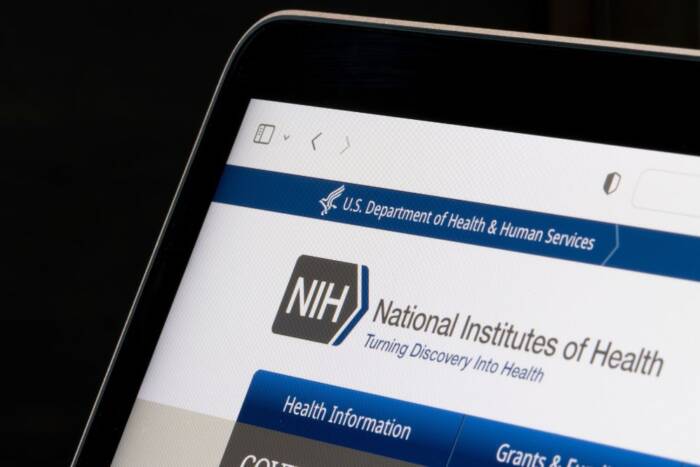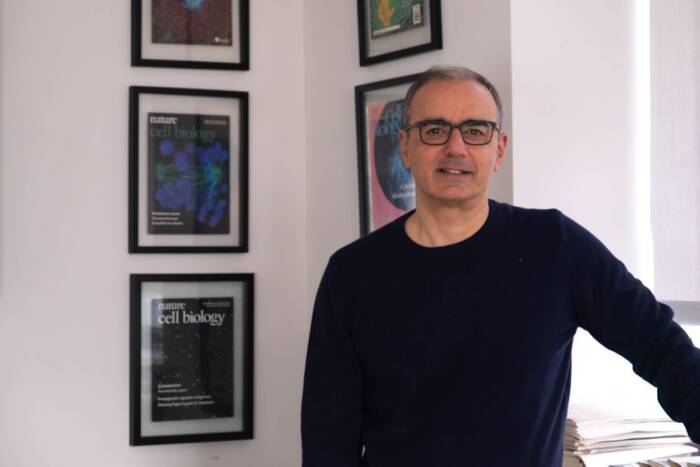Rockefeller Discoveries Named Breakthroughs of the Year by Science Magazine
The Rockefeller University, the nation’s first biomedical research institute, will celebrate its Centennial in just two years. Most of the greatest scientific discoveries of the century are rooted in Rockefeller, including two Science magazine breakthroughs of 1998-on circadian rhythm and the biochemical roots of the nervous system. The university’s mission, to pursue science of the highest standard for the good of humanity, is captured in its motto pro bono humani generis.
This month, world-renowned cancer biologist Arnold J. Levine, Ph.D. became the university’s eighth president, assuming the office of Torsten N. Wiesel, M.D., the Nobel laureate who retired after restoring vitality and balanced budgets to the venerable institution. Levine leads 475 faculty members and researchers and 140 Ph.D and M.D.-Ph.D. students, in using their knowledge to help the people of New York City and the wider world.
Nearly half of Rockefeller’s full professors are members of the National Academy of Sciences. Four have Nobels, three have MacArthur Foundation “genius” awards” and 14 have Lasker Awards, an honor often described as the “American Nobel.” Their best work of 1998, published in scientific journals and referenced in many news articles, follows:
1998 Top Biomedical Discoveries
-
New gene controls sleep/wake cycle
(Science magazine “Breakthrough of the Year”)
A gene called double-time regulates the molecular cycles underlying circadian rhythms, or the internal controls timing daily activities in living organisms, according to Michael W. Young, Ph.D., professor and head of the Laboratory of Genetics. “We’ve identified a gene in the fruit fly Drosophila that times the pairing of two proteins-PER and TIM-essential for circadian rhythms.” Young’s group identified TIM in 1994. Similar mechanisms exist in humans.
The double-time gene discovery, reported by the researchers in a cover article in the July 10, 1998, issue of the journal Cell, was named the first runner-up in “Breakthrough of the Year” by the journal Science.
“Across the tree of life, from bacteria to humans, clocks use oscillating levels of proteins in feedback loops to keep time. Perhaps more amazing, fruit flies and mice-separated by nearly 700 million years of evolution-share the very same timekeeping proteins. Now that they understand the cellular clock, scientists can begin to manipulate it, with applications from curing jet lag to brightening winter depression.”
(Science, Dec. 18, 1998)
-
Structure of ion channel reveals clues to how nervous system works
(Science magazine “Breakthrough of the Year”)
Ion channels regulate the flow of electrically charged atoms across cell membranes-a process that is critical to the generation of electrical impulses in the nervous system and in the heart. Earlier this year, RU Professor Roderick MacKinnon, head of the Laboratory of Molecular Neurobiology and Biophysics and an investigator at the Howard Hughes Medical Institute, solved the first structure of an ion channel, a finding hailed by the journal Science as a runner-up in “Breakthrough of the Year.”
“This year, in a landmark discovery that reveals one of the biochemical roots of the nervous system, a New York City team published the three-dimensional structure of one such ion channel-selective for the potassium ion-in a bacterium. This long-awaited finding is a technical marvel that provides insight into how the nervous system works its magic.”
(Science, Dec. 18, 1998)
- Proof that immunity to cancer exists naturally in humans.
“Cancer-vaccine work has been slowed because researchers could not find an example of a human immune system that had conquered cancer on its own. That changed this month when a team led by Robert Darnell, head of the laboratory of molecular neuro-oncology at Rockefeller University, found that people whose bodies produce large amounts of a special killer T cell that attacks the ‘cdr2’ tumor antigen are immune to breast and ovarian cancer. ‘This is an important first step forward because we now know that immunity to cancer does exist, and it requires T cell response to tumor antigens,’ says Darnell.”
(U.S. News & World Report Nov. 23, 1998)
-
Creation of a vaccine to fight Strep A.
“To outwit the bugs, researchers at Rockefeller University and Siga Pharmaceuticals Inc., in New York, identified ‘conserved’ proteins retained in all the 120 known strains of Strep A. Strep infects up to 20 million people in the United States each year and is a major cause of childhood hospitalization. The scientists created a subunit vaccine by taking genetic coding for a surface protein shared by all strains and inserting it into harmless bacteria that live in the nose. A spray sends these bacteria into the nose, where they produce the foreign protein, spurring the body to fight it.”
(U.S. News & World Report, Nov. 23, 1998)
-
A new clue to the control of aging in human cells.
“Cell biologists have discovered what may be a key switch in the control of cellular aging. In most tissues, the telomeres, repetitive DNA sequences that cap the ends of the chromosomes, shorten each time the cell divides, until the chromosomes are so frayed that the cell ages and dies. But in a few normal cells, including those that make eggs and sperm, and in cancer cells, an enzyme called telomerase rebuilds the telomeres after each division, keeping the cell immortal. Titia de Lange and her colleagues at The Rockefeller University in New York City describe the discovery in human cells of a protein they call tankyrase, an enzyme that may enable telomerase to do its work. If the new enzyme does play this role, the way might be opened to developing compounds that would exploit tankyrase to control cell life-span.”
(Science, Nov. 20, 1998)
-
Leprosy finding spells good news for muscular dystrophy and multiple sclerosis patients
“We have identified for the first time the exact cellular site that the leprosy-causing bacterium uses to attack peripheral nerves,” says Anura Rambukkana, Ph.D., principal investigator of the study and a research associate in the Laboratory of Bacterial Pathogenesis and Immunology. “Our findings point to a way of treating the disease in its early stages, before the immune response comes into play. More importantly, these findings have tremendous ramifications for understanding the early molecular events leading to nerve damage of other neurodegenerative diseases, such as muscular dystrophy and multiple sclerosis, that could lead to treatments.”
(The research was reported in Science, Dec. 11, 1998)
-
Enzyme holds key to better antibiotics
“Doctors are getting their first look at a vital clue in the battle to stop antibiotics becoming ineffective…Medical researchers have created images of an enzyme blamed for much of the growing resistance to the life-saving drugs. They hope that by studying the enzyme they will get a valuable insight into how it works and how it can be manipulated so that antibiotics can be made more effective. ‘So now that we know the structure of the enzymes, it may become possible to design a drug that can be given along with the antibiotic to prevent the antibiotic from being inactivated,’ says Stephen Burley, who leads the imaging research team at the Howard Hughes Medical Institute at Rockefeller University in New York.”
(Sunday Times (London), Sept. 20, 1998)
-
New approach to treating lupus identified
“Scientists at Rockefeller University may have discovered a new therapeutic approach for the treatment of systemic lupus erythematosus, an autoimmune disease that causes chronic inflammation and severe kidney disease. The disease, which primarily affects women between the ages of 20 and 40, develops when the immune system produces autoantibodies, or antibodies directed against its own cells. In a recent paper, Rockefeller researchers describe the role of antibody-binding molecules called Fc receptors in the onset of lupus. According to senior author Jeffrey V. Ravetch, Theresa and Eugene Lang Professor and head of the Leonard Wagner Laboratory of Molecular Genetics, the study shows that preventing the activation of antibody receptors may be an effective, alternative way to treat autoimmune diseases like lupus. ‘Based on these studies,’ says Ravetch, ‘we are trying to find some pharmaceutical partners that would be interested in developing a model for antibody specificity just for this receptor in humans.'”
(The Scientist, March 16, 1998)
-
Novel method for fighting cancer developed
Researchers from The Rockefeller University in New York City have developed a new method to fight cancer by using dendritic cells to activate T cells via a new pathway. The technique offers the promise of new therapies for cancer, AIDS and autoimmune diseases. “We’ve shown that dendritic cells can trigger an immune response when cultured with dying cells that carry an antigen, such as proteins from tumors or viruses,” says lead author Matthew Albert, B.S., a biomedical fellow in the Laboratory of Cellular Physiology and Immunology at Rockefeller. “This is a new and very potent pathway for activating T cells.”
(The research was reported in Nature, March 5, 1998)


